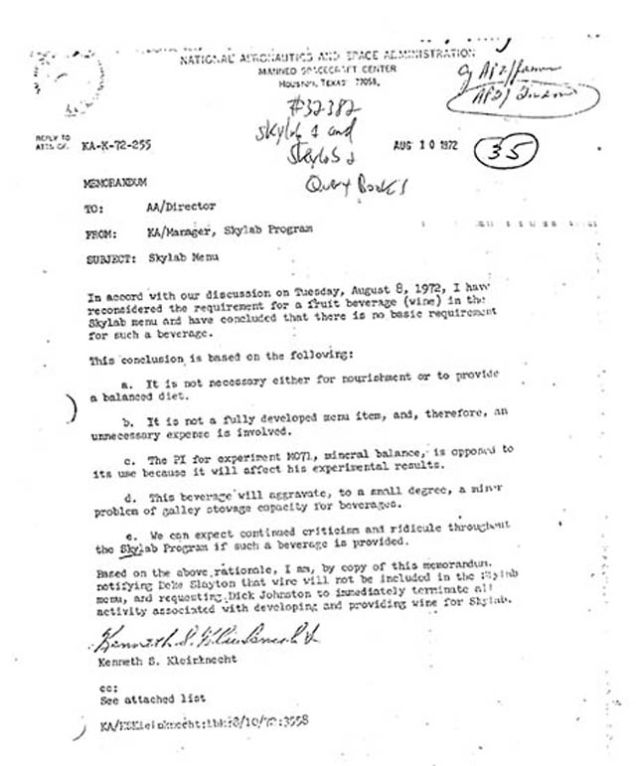Where No Drink Has Gone Before
On July 21, 1969, Buzz Aldrin became the second human to ever set foot on the moon. Shortly before exiting the lunar lander, Aldrin radioed back to Earth with a simple request: “I’d like to take this opportunity to ask every person listening in, whoever and wherever they may be, to pause for a moment and contemplate the events of the past few hours, and to give thanks in his or her own way.” And with that, his radio went silent for a moment, as planned.
But Aldrin, himself, did not. During the brief respite from extraterrestrial communications, the astronaut broke out a home communion kit he brought with him, said a prayer, took a bite from a communion wafer, and poured himself a little wine. NASA kept this a secret for years, fearing that those who objected to the perceived mixing of church and state would complain. (At the time, there was a pending lawsuit stemming from a reading from Genesis as the Apollo 8 mission orbited the moon.) The idea of alcohol on the moon, was, however, fine — for a few years, at least.
As the Apollo missions were ongoing, NASA wasn’t just tinkering with space technology. They were also tinkering with space menus. A NASA food scientist named Charles Bourland was charged with developing a beverage list of sorts. And that included wine — wine which was supposed to be sent up to Skylab, an early space station. Gizmodo explained:
After consulting with several professors at the University of California at Davis, it was decided that a Sherry would work best because any wine flown would have to be repackaged. Sherry is a very stable product, having been heated during the processing. Thus, it would be the least likely to undergo changes if it were to be repackaged.
The winner of the space Sherry taste test was Paul Masson California Rare Cream Sherry. A quantity of this Rare Cream Sherry was ordered for the entire Skylab mission and was delivered to the Johnson Space Center. A package was developed that consisted of a flexible plastic pouch with a built-in drinking tube, which could be cut off. The astronaut would simply squeeze the bag and drink the wine from the package. The flexible container was designed to be fitted into the Skylab pudding can.

 Bonus Fact: Despite the above, maybe astronauts should be allowed to drink some wine. According to a 2011 report by Space.com, red wine could provide health benefits, as “an ingredient in red wine, called resveratrol, has shown promise protecting against the bone density loss and insulin resistance that can be side effects of flying in space.” (The study determined this by hanging rats “upside down by their hind limbs and tails to simulate weightlessness,” noting that “the rats fed resveratrol did not develop the adverse symptoms of the other group.” Fun.) Unfortunately for Sherry fans, this study won’t help that cause — Sherry is made from white grapes and contains very little resveratrol.
Bonus Fact: Despite the above, maybe astronauts should be allowed to drink some wine. According to a 2011 report by Space.com, red wine could provide health benefits, as “an ingredient in red wine, called resveratrol, has shown promise protecting against the bone density loss and insulin resistance that can be side effects of flying in space.” (The study determined this by hanging rats “upside down by their hind limbs and tails to simulate weightlessness,” noting that “the rats fed resveratrol did not develop the adverse symptoms of the other group.” Fun.) Unfortunately for Sherry fans, this study won’t help that cause — Sherry is made from white grapes and contains very little resveratrol.
From the Archives: Where No Sandwich Has Gone Before: Space food, part two. (And, wow, do I need more creative titles.)
Related: “The Astronaut’s Cookbook” by the aforementioned Charles Bourland. From the description: “This book allows anyone with a normal kitchen to prepare space food. Since some of the processing such as freeze dehydration, and packaging cannot be accomplished in the normal kitchen, many of the recipes will not produce the food that would be launched in space, but will prepare food similar to what the astronauts would eat after they had added the water to the food in space.”
